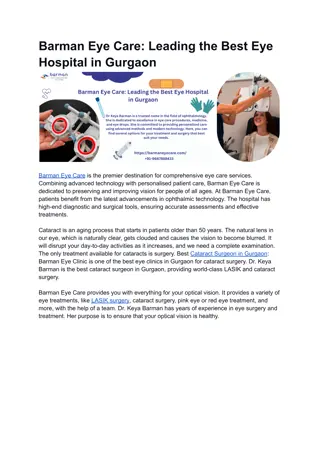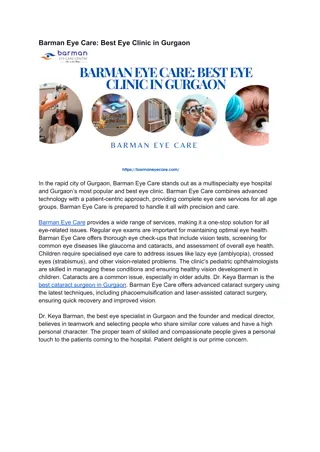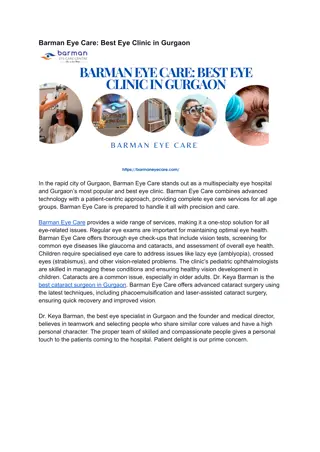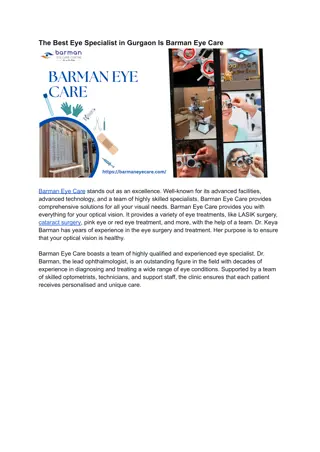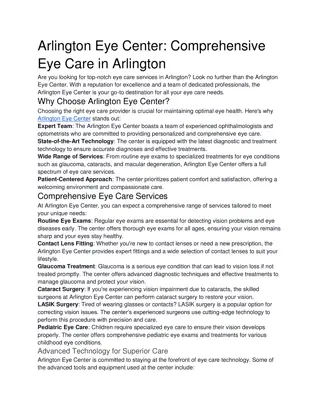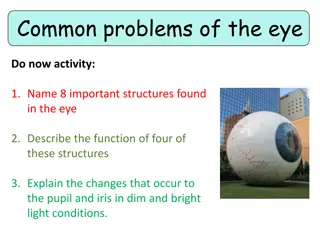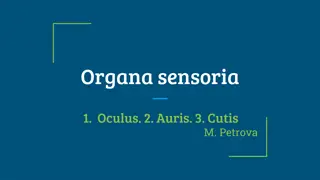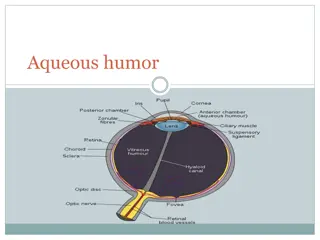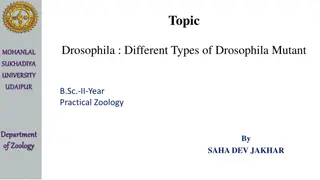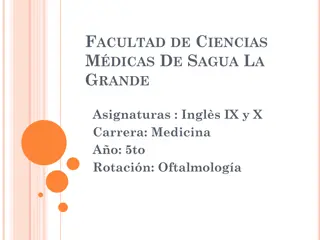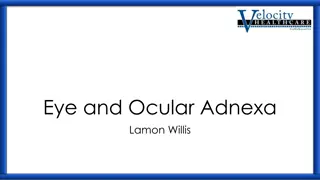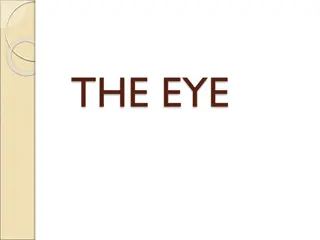Structure and Function of the Eye: Overview
The structure and functions of the eye, including the iris, cornea, lens, and accommodation mechanisms are explained. Explore how your eye adjusts to light, focuses images, and perceives depth. Discover the similarities between the eye and a camera's mechanisms.
Download Presentation

Please find below an Image/Link to download the presentation.
The content on the website is provided AS IS for your information and personal use only. It may not be sold, licensed, or shared on other websites without obtaining consent from the author.If you encounter any issues during the download, it is possible that the publisher has removed the file from their server.
You are allowed to download the files provided on this website for personal or commercial use, subject to the condition that they are used lawfully. All files are the property of their respective owners.
The content on the website is provided AS IS for your information and personal use only. It may not be sold, licensed, or shared on other websites without obtaining consent from the author.
E N D
Presentation Transcript
Structure of the Eye: Iris The iris is similar to the diaphragm in a camera Your iris widens in dim light and narrows in bright light The f-number of your eye varies from f/2 (large opening) to f/8 (small opening) Compare this to the range of an average camera lens, which may have f-numbers from f/2.8 to f/22.
Structure of the Eye: Iris The range of intensities that your eye can respond to is a factor of 1013 The main function of the iris is not to control the intensity of light coming into your eye Main functions of iris Reduce aberrations, sharpen image Increase depth of field
Structure of the Eye: Cornea and Lens Cornea Eyelens There are two lenses in your eye, the cornea and the eyelens. The cornea, the front surface of the eye, does most of the focusing in your eye The eyelens provides adjustable fine-tuning of the focus
Structure of the Eye: Cornea and Lens cornea: n 1.4 eyelens: n 1.4 air: n = 1 humors: n 1.3 This is because the cornea-air surface has a large change in the index of refraction, so light bends a lot The power of the cornea lens is ~43 diopters (focal length 2.3 cm) The eyelens is surrounded by the humors, which have a very similar index of refraction as the lens itself.
The Eyelens: Accommodation The eyelens changes its focal length by changing its shape. Ligaments pull on the lens to change the amount of bulge
Eyelens: Accommodation Muscles contract, ligaments relax, more bulge, more bending power, shorter focal length Ligaments Eyelens Muscles relax, ligaments contract, less bulge, less bending power, longer focal length
How Your Eyelens Focuses Your eyelens has a small depth of field You can't see something close and far with both objects in focus at the same time Hold out your thumb about a foot away from your eye Then, alternately focus on thumb and me (right above your thumb) Note that you cannot see both me and your thumb sharply (in focus) at the same time You focus on one or the other by changing the bulge of your eyelens
, : : ( ) : https://www.youtube.com/watch?v=nbwPPcwknPU (3:44-5:48) https://www.youtube.com/watch?v=Av1ZiN9P01s http://castle.eiu.edu/~ddavis/chapter_19/ch19_2.htm
thumb is out of focus less bulgy, longer f less bulgy, longer f professor is in focus thumb is in focus more bulgy, shorter f professor is out of focus
; - cheshire cat illusion: 2 , , , . http://www.exploratorium.edu/snacks/cheshire-cat
Rods & cones: 4 key differences between scotopic and photopic vision Contrast sensitivity Distribution of rods and cones Spectral sensitivity of rods and cones Sensitivity to light of rods and cones.
1. Rods are more sensitive than cones (x50) 2. There are more rods than cones (x10) 3. Ganglion cells have larger RFs for rods than cones (i.e. more post-receptoral summation)
1. Contrast sensitivity functions at three different light levels Spatial frequency (cycles/degree) Sensitivity (1/threshold contrast) Spatial Frequency (cycles/mm on retina)
2. Distribution of rods and cones visual eccentricity (deg) spatial density (cells/square mm) macula lutea cones rods retinal eccentricity (mm)
3. Spectral sensitivity curves for rod and cone vision Relative sensitivity Wavelength (nm)
Purkinje effect A shift in the colour appearance at dusk. Reds look darker, blues look brighter
Dark adaptation curves Low Log. light sensitivity Rods Cones High Time in dark (min)
Light and Dark Adaptation Light adaptation: Dark light. Faster. Dark adaptation: Light dark. Slow.
On-off, off-on : . Animation: http://www.sumanasinc.com/webcontent/animations /content/receptivefields.html




